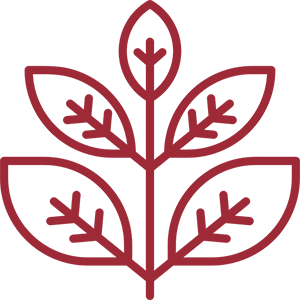
The Castle of Pralormo, whose origins date right back to the Middle Ages, has been transformed over the centuries into a noble residence, thanks to the work of some of the greatest architects of the time.
Its current appearance dates back to the 19th century when Count Carlo Beraudo di Pralormo, a diplomat and politician of the Albertine era, extensively transformed the residence after the building’s original military function had become obsolete. He chose the leading architect of the day, Ernesto Melano, to design the project, and entrusted the planning of the garden to Xavier Kurten.
The residence is still permanently inhabited by its owners, the Beraudo di Pralormo Counts, who have been in possession of Castello di Pralormo since 1680. Considering themselves ‘temporary custodians’ of their heritage, they consider it right and proper not only to preserve the Castle and the estate because they are part of the territory and landscape, but also wish to make them accessible to the public without compromising their essential characteristics.
Starting in the 1990s, they therefore began to organise temporary exhibitions enabling the park, outbuildings and Castle to be opened and enjoyed by the public, while guaranteeing it benefitted from an ongoing programme of regular and extraordinary maintenance.
Every year, the Castle offers a rich calendar of events, running from early spring through to late autumn. The ‘Messer Tulipano’ event, held every April, is a particularly big crowd puller, attracting thousands of visitors to come and admire the park in bloom with a display of over 75,000 colourful tulips.
In addition, a new visitor itinerary has recently been inaugurated inside the Castle, displaying an extraordinary collection of vintage toy trains (1895-1940), with an astonishing large-scale (1:43) working model that spans three rooms on the top floor. The visit, reserved for groups of enthusiasts and collectors, includes the very first spring-loaded models, as well as steam and electric trains, along with documents and maps dedicated to the construction of railways and railway tunnels, technological innovations that ignited the enthusiasm of our great-grandparents and of which the scale models are valuable evidence.
The Castle also provides 5 ‘farmhouse suites’, established in the outbuildings and located around the perimeter of the park. Each apartment is themed and reminiscent of an age-old traditional trade: namely, the lumberjack, the coachman, the gardener, the vegetable gardener and the herbalist.
These cosy rustic suites, embellished with period furnishings, equipment and tools, offer visitors an opportunity to live life for a few days in the tranquillity of Pralormo, just a few kilometres away from Turin and its museums, and on the doorstep of the areas of the Langhe and Roero.
In addition to the Castle, the estate also includes the historic park, the flower garden, the outbuildings (the Orangerie, an ancient citrus greenhouse, and the Castellana, an imposing rural building), and the agricultural farm, which is still managed by the family with the aim of preserving the surrounding landscape in its natural state.
Visiting the park
Enhanced by ever-changing blooms, including the undisputed queen of the kingdom, the rose, and special varieties like the ‘Variegata di Bologna’, with its mottled petals that make every bud unique, this walk through the park winds its way past centuries-old trees, the frog pond, the giant rosemary plant, lemon trees and meandering paths that offer extraordinary views of the surrounding mountain ranges. Benches are provided along the avenues of the grounds, so that you can pause to listen to the sounds of nature and its singularly evocative music. A collection of orchids and ferns thrive undisturbed in the old French greenhouse, a beautiful 19th-century iron and glass construction originating from Paris. Following the forest path, ‘animated trees’ appear, with an owl carved into the trunk of an old maple tree casting a careful eye over what is happening in the woods, along with squirrels, gnomes and tiny birds: blackbirds, jays, woodpeckers, wrens and robins all seeming to brighten up the quietness of the park with their delicate chirps. There is a giant Pinocchio puppet to entertain younger visitors, as well as many different settings where they can take photographs, Mr. Binocular’s workshop to explore and discover the secrets and quirks of this fantastical character, and a kaleidoscope tree where they can observe views of the park transformed into strange colourful shapes and wondrous images.
Guided tours of the Castle
The guided tour inside the Castle aims to take visitors around many of its principal rooms, demonstrating how people used to live and work there during the period between the mid-19th and early 20th centuries. The itinerary weaves its way through a number of different ambiences, penetrating some of the most intimate areas of the residence: the Cellar, dedicated to equipment for grape harvesting and winemaking; the Office, where the ceramic and porcelain services, silverware and crystal are kept; the Servants’ Room, where the Castle staff had their own dining table, as well as the livery cupboard and a special stove for ironing; the Kitchen, with its copper pots, stone mortars, coffee roasters, iceboxes, cake moulds and countless other utensils that the cooks and pastry chefs used to prepare their exquisite and theatrical dishes and the grand Hall of Honour, which was the most spectacular room of the project that transformed the fortress into a state residence in the mid-1800s. The floor here is composed of Venetian mosaic and echoes the colours of the interior façades, while a sumptuous candle chandelier suggestively evokes the festivities and balls held for over 300 years by the same family, who still reside in the Castle today.
Last but not least, visitors enter the Neo-classical dining room where the table is set for an important occasion, the study used by Minister Carlo Beraudo di Pralormo (1784-1855), Ambassador to Vienna and Paris, which is decorated in Pompeian style and is rich in historical artefacts, and the blue drawing room which is where the guided tour concludes. The walls and ceiling are entirely painted with a trompe-l’oeil curtain motif, creating an atmosphere of intimacy, and recalling afternoons spent among friends executing flag embroidery, an ancient Baroque tradition in the Piedmont region, typically used for furnishing the residences.
“Pure astonishment and wonder…” – Consolata Pralormo recounts that “This was the phrase that a visitor wrote to me after visiting the Castle and it constantly motivates me to carry on proposing new ideas and exploring curiosities, which are far from lacking at the Castle… for example, you only have to open a cupboard or an old trunk to rediscover unusual objects, such as dance cards listing the gentlemen who had reserved dances at the ball which the ladies wore tied around their wrists, the silver sheath used for the chef’s knives, wax seals with drawings depicting special announcements, a Parisian attaché case with board games inside, messages of love entrusted to carrier pigeons, a ‘miroir’ cup, the ceremonial menu prepared for lunch with the Tsar… Valuable relics also re-emerge from a closet in the sacristy of the chapel, like silver votive offerings that, together with the many stubs of burnt candles, bear witness to the sacrifice and courage of the soldiers on the front lines and the devotion and hope of their families waiting anxiously for their safe return”.
Certain parts of the park may be used for picnicking after the visits, but an area equipped with tables and benches is also available under the porticos. The Castle is open every Sunday from 10 am to 7 pm. Please note that in order to comply with the regulations issued by the Regional Council of Piedmont, measures have been put in place to allow visitors safe access. For park visits, access is limited based on the number of visitors, while tours inside the Castle are scheduled in small groups.
The history of Castello di Pralormo
The Castle’s park is of great historical and landscape interest. It was created in the 19th century by Count Carlo Beraudo di Pralormo, King Carlo Alberto’s Minister of the Interior, who entrusted the transformation of the small rose garden on the south side into an English-style park to Xavier Kurten, a Court landscape architect who was working on the Royal Castle of Racconigi at the time.
Kurten’s project, of which the autographed list of plant species to be planted still remains, was fully realised, and its layout has been passed down through the generations. English in style and deeply romantic in taste, it contrasts the sheer mass of the Castle with the height of majestic species such as cedars and oaks.
Footpaths wind their way along curving trails, and the colours of maples, cedars, plum trees, yews, lindens, lilacs and spirea shrubs offer different sensations to visitors, depending on the light and the season. It is, however, especially in summer that Kurten’s design reveals all the mastery of its author, capable of making a place located in such an arid territory appear so fresh and delightful.
In the park, the designer also had two ponds created into which the rainwater collected from the roofs of the Castle, the Orangery and the farm building bordering the grounds converged, as well as gathering water from the garden paths. This water-saving system, essential in such a dry area, still allows the garden’s needs to be met today without tapping into the municipal water supply or wells.
The landscape expert also took advantage of the natural backdrop of the mountain range, by expertly trimming the trees so that during walks in the park one could enjoy special views of the panorama from the Colle di Cadibona mountain pass to the Monte Rosa valleys.
Changes in taste at the end of the 19th century and the disappearance of certain species introduced some limited changes to Kurten’s layout, principally the construction of a two-storey building for the Orangery and stables, and the installation of a greenhouse on the south side of the Castle (1875- 1900).
The introduction of bamboo, the rose beds and the planting of a rare shrub species (Clerodendrum Perbungei) next to the Castle terrace probably all date back to the same period. One of the wonders of this garden, which is the result of both Kurten’s choice of plants and Countess Matilde Beraudo di Pralormo’s appreciation and passion for flowers at the end of the 19th century, is the year-round rotational flowering.
Given that it is an English-style garden, flowers have always played a secondary role, being relegated to peripheral areas along the perimeter wall or as cut flowers in a hidden little garden. However, at the beginning of winter, the fragrance of calycanthus is almost overwhelming, while in March visitors are welcomed by the splendid yellow hues of forsythia, shortly followed by narcissus, crocuses and violets peeping out from the lawns.
In the course of 1994, efforts were made to catalogue all the existing trees, shrubs and herbaceous species in the garden, as well as monitoring their location and compiling a garden herbarium. Since 2000, the park is opened to the public every springtime on the occasion of the ‘Messer Tulipano’ initiative, displaying the blooming of tens of thousands of tulips, and exhibiting anecdotes and interesting facts about these magnificent flowers.
Facilities and services: sleeping in a Castle in the Piedmont region.
Accommodation: 5 apartments, between 30 and 90 square meters, with 2 to 5 beds and fully equipped kitchen. Sleeping space for up to 17 people.
Weddings and private events at Castello di Pralormo
Weddings: Two venues with 4 halls, seating for 130 to 600 guests.
Park of 25,000 square metres, private parking.
Castello di Pralormo has been authorised and approved by the Municipality for the celebration of civil weddings or civil unions. Corporate Events: upon request Private Events: upon request Visiting Castello di Pralormo
The park is open every day in April, for a fee for individuals and groups, on the occasion of the ‘Messer Tulipano’ botanical exhibition, with its 100,000 flowering bulbs. It is also possible to visit the castle with the purchase of a separate ticket. The Castle is open for individual visits on Sundays from May to November, excluding August. For groups of at least 15 people, tours can be arranged on weekdays. A new guided tour has recently been introduced, dedicated to a rare collection of vintage toy trains (1895-1940), with an astonishing large-scale working model (1:43) that runs through 3 rooms on the Castle’s top floor.
Places of interest in the vicinity
Racconigi Castle, Casanova Abbey Complex, the Martini Winemaking History Museum, the ancient city of Alba, and the hills of the Langhe and Roero areas, territories renowned for their excellence in food and wine.
 Accommodation
Accommodation
 Co-Working
Co-Working
 Film sets
Film sets
 Gardens
Gardens
 Medium and long-term rentals
Medium and long-term rentals
 Parks
Parks
 Pet Friendly
Pet Friendly
 Private events
Private events
 Residences
Residences
 Spirituality
Spirituality
 Visits
Visits
 Weddings
Weddings
 Cultural tourism
Cultural tourism  Excursions
Excursions  Gardens
Gardens  Historic Homes open to visitors
Historic Homes open to visitors  Nature
Nature  Sports
Sports  Walking itineraries
Walking itineraries